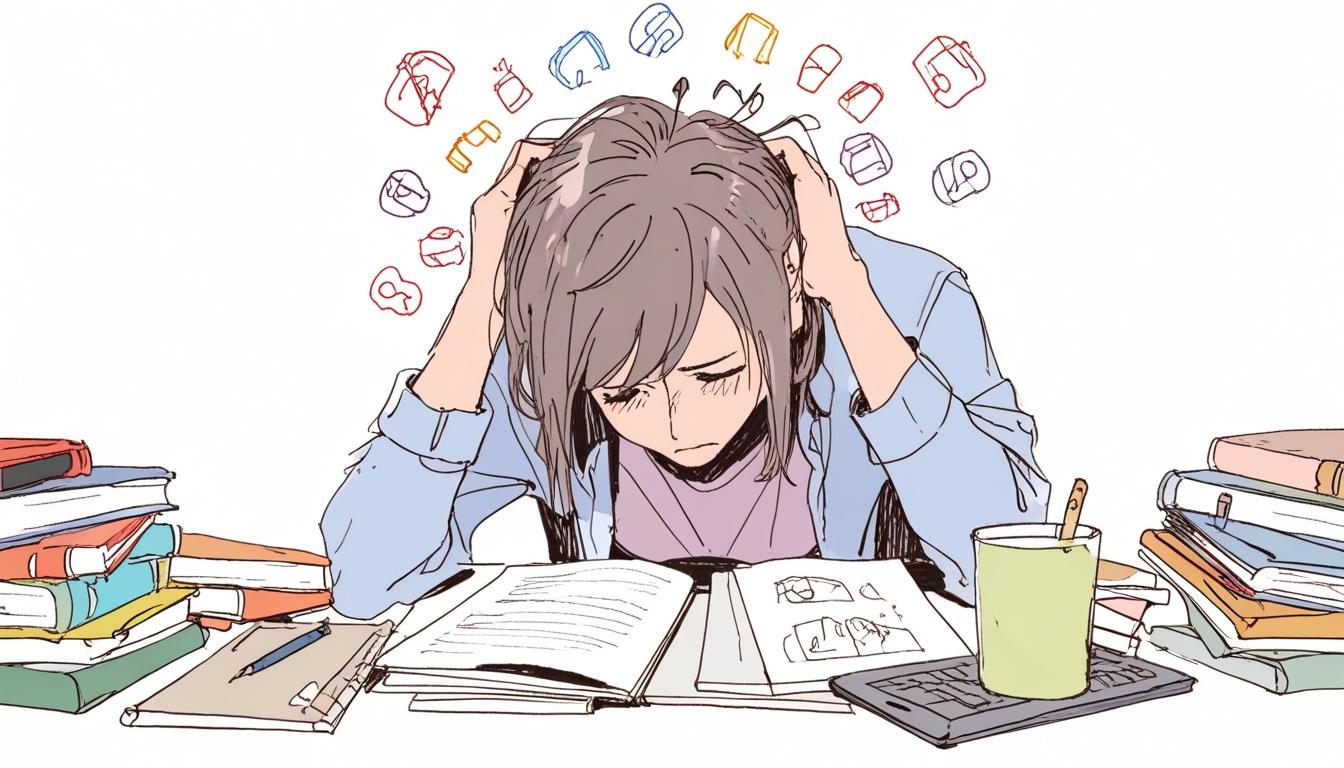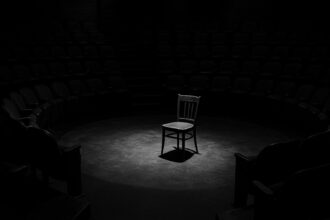As economic pressures and academic demands intensify, Nido Living partners with psychologist Dr Tara Quinn to tackle a surge in student burnout, revealing that over half of students report anxiety and nearly half suffer depression, with mental health support remaining critically underused.
The Rising Tide of Student Burnout: A Call for Greater Support
In recent times, the phenomenon of student burnout has emerged as a pressing concern among the 18 to 25 age demographic. As students confront mounting academic pressures, financial constraints, and an evolving social landscape, their mental well-being is increasingly at risk. Nido Living, a prominent player in integrated student property management, has raised alarm over the prevalence of burnout among its residents, particularly highlighting the intense challenges posed by today’s economic climate. The company collaborates with psychologist Dr Tara Quinn to address these issues, emphasising the importance of mental health support within the student community.
The pandemic has reshaped students’ priorities, with many now feeling significant pressure to excel academically. Rising living costs and the precarious employment landscape exacerbate this stress as students strive to justify the financial investments their families make in their education. According to Dr Quinn, “Burnout is historically most commonly associated with those at work but there is a rising incidence of it at university.” Students are navigating a complex interplay of academic responsibilities alongside a newfound emphasis on social connections, which can further complicate their ability to maintain a healthy balance.
Nido Living’s recent global survey revealed critical insights into student concerns. Affordability, building friendships, and achieving a work-life balance have emerged at the forefront. Suraiya Comunello, Nido Living’s CMO, noted that while cost has always been a consideration, there has recently been a pronounced shift towards assessing the value for money when choosing educational institutions. The findings underscore a significant transformation in student culture since the pandemic, with mental health and relational aspects taking centre stage.
The data surrounding student burnout paints a grim picture. Over 53% of students reported experiencing anxiety in the past year, and 45% faced symptoms of depression. Alarmingly, around 70% of students with high burnout scores also reported elevated anxiety levels. Though awareness of mental health issues has grown, only about 20% of students seek help, often due to the stigma surrounding mental health and the barriers to accessing available resources. Even as universities attempt to bolster mental health support, long wait times and limited staff exacerbating the situation hinder the effectiveness of these initiatives.
Nido Living and Dr Quinn have taken proactive steps to combat burnout, emphasising the importance of early recognition of its symptoms. Dr Quinn elaborates, largely, burnout manifests in students when their academic loads are misaligned with their capacity to cope. The psychological impact can be significant, with signs ranging from emotional exhaustion to physical ailments such as headaches and reduced immunity. Therefore, raising awareness and promoting educational initiatives around mental health is essential for effective intervention.
To address these challenges, Nido Living’s collaboration with Dr Quinn has yielded an innovative wellbeing partnership that offers a global student toolkit, online group sessions, and access to practical guidance on mental health maintenance. Nido Living’s commitment to fostering a supportive community where students feel empowered to discuss their struggles is underscored by the availability of on-ground teams who assist residents facing heightened levels of anxiety and burnout.
Amidst these interventions, the need for establishing boundaries cannot be overstated. Dr Quinn stresses the necessity of learning to say no to overwhelming demands and recognising personal stressors to mitigate the risks of burnout. Setting a good sleep routine, engaging in meaningful social interaction, and prioritising physical well-being are essential components of a balanced lifestyle that can empower students to navigate their challenges more effectively.
The stakes are high as the demand for mental health resources continues to rise, with numerous studies indicating that many students struggle with feelings of anxiety and depression, compounded by academic pressures. Future-oriented strategies targeting these concerns are essential not just for academic success, but for the holistic well-being of students navigating this demanding phase of their lives.
As we witness a critical reevaluation of support systems for students, it is imperative that educational institutions, advocates, and mental health professionals join forces to address burnout proactively. The urgency of this call to action cannot be understated—failure to act may lead to irrevocable losses in mental health and academic capability for future generations.
Reference Map:
- Paragraph 1 – [[1]](https://news.google.com/rss/articles/CBMilwFBVV95cUxQTnRYUjlDVngtajZoN0lfOGVrX0VNY0FVaTBoNkc5cmI4MWw0S2VzVG51emFjV19DeTBNTUtmUzVYeThZLXZMckd3SkJ2SVdKWmlTeXp1UjNHT044VHhOeDE4XzNhZ1NJUS05cVNOY0xycjFFaW9iOS1uU1ozN0ZRSXVMekY5MWlBNDd0TzRKTzQ5NTFsYUNr?oc=5&hl=en-US&gl=US&ceid=US:en), [[2]](https://apnews.com/article/001e5e576621912b983e0fdb1b0c9f01)
- Paragraph 2 – [[1]](https://news.google.com/rss/articles/CBMilwFBVV95cUxQTnRYUjlDVngtajZoN0lfOGVrX0VNY0FVaTBoNkc5cmI4MWw0S2VzVG51emFjV19DeTBNTUtmUzVYeThZLXZMckd3SkJ2SVdKWmlTeXp1UjNHT044VHhOeDE4XzNhZ1NJUS05cVNOY0xycjFFaW9iOS1uU1ozN0ZRSXVMekY5MWlBNDd0TzRKTzQ5NTFsYUNr?oc=5&hl=en-US&gl=US&ceid=US:en), [[3]](https://time.com/5190291/anxiety-depression-college-university-students/)
- Paragraph 3 – [[4]](https://crowncounseling.com/statistics/student-burnout/), [[5]](https://www.worldmetrics.org/college-burnout-statistics/)
- Paragraph 4 – [[2]](https://apnews.com/article/001e5e576621912b983e0fdb1b0c9f01), [[6]](https://www.statista.com/statistics/1393505/college-students-mental-health-worsened-since-in-school-us/)
- Paragraph 5 – [[1]](https://news.google.com/rss/articles/CBMilwFBVV95cUxQTnRYUjlDVngtajZoN0lfOGVrX0VNY0FVaTBoNkc5cmI4MWw0S2VzVG51emFjV19DeTBNTUtmUzVYeThZLXZMckd3SkJ2SVdKWmlTeXp1UjNHT044VHhOeDE4XzNhZ1NJUS05cVNOY0xycjFFaW9iOS1uU1ozN0ZRSXVMekY5MWlBNDd0TzRKTzQ5NTFsYUNr?oc=5&hl=en-US&gl=US&ceid=US:en), [[7]](https://www.gitnux.org/college-burnout-statistics/)
- Paragraph 6 – [[1]](https://news.google.com/rss/articles/CBMilwFBVV95cUxQTnRYUjlDVngtajZoN0lfOGVrX0VNY0FVaTBoNkc5cmI4MWw0S2VzVG51emFjV19DeTBNTUtmUzVYeThZLXZMckd3SkJ2SVdKWmlTeXp1UjNHT044VHhOeDE4XzNhZ1NJUS05cVNOY0xycjFFaW9iOS1uU1ozN0ZRSXVMekY5MWlBNDd0TzRKTzQ5NTFsYUNr?oc=5&hl=en-US&gl=US&ceid=US:en)
Source: Noah Wire Services
- https://news.google.com/rss/articles/CBMilwFBVV95cUxQTnRYUjlDVngtajZoN0lfOGVrX0VNY0FVaTBoNkc5cmI4MWw0S2VzVG51emFjV19DeTBNTUtmUzVYeThZLXZMckd3SkJ2SVdKWmlTeXp1UjNHT044VHhOeDE4XzNhZ1NJUS05cVNOY0xycjFFaW9iOS1uU1ozN0ZRSXVMekY5MWlBNDd0TzRKTzQ5NTFsYUNr?oc=5&hl=en-US&gl=US&ceid=US:en – Please view link – unable to able to access data
- https://apnews.com/article/001e5e576621912b983e0fdb1b0c9f01 – A recent NCAA survey involving over 23,000 student-athletes indicates a decline in mental health concerns post-COVID-19 pandemic, though improvements vary across demographics. Conducted between September 2022 and June 2023, the study reveals fewer participants feeling overwhelmed and mentally exhausted, particularly among men in Division I sports. Women showed a smaller reduction in these negative feelings. The survey underscores that students of color, queer-identifying, and transgender or nonbinary individuals continue to report higher rates of mental health struggles. Academic pressures remain the primary cause of these concerns, with future planning, financial issues, playing time, and family worries also contributing. The findings highlight that fewer athletes feel comfortable discussing mental health with their coaches. However, a significant number trust campus resources, even if only half feel at ease seeking help from a licensed provider. The complete study will be presented at the 2024 NCAA convention in Phoenix.
- https://time.com/5190291/anxiety-depression-college-university-students/ – The number of college students seeking mental health treatment has significantly increased, causing counseling centers to face unprecedented demand. Many students, like Nelly Spigner, experience pressure and symptoms of mental health issues like depression and anxiety, often exacerbated by the academic and social stresses of college life. Despite the growing need for mental health services, many university counseling centers struggle with limited resources, long wait times, and staffing shortages. Some universities have responded by adding more counselors, offering online screenings, and using mobile apps, but these measures are not always sufficient. Off-campus treatment programs are providing supplementary care but can be costly and inaccessible for some students. Overall, the growing demand for mental health services in colleges underscores the need for better resources and support systems for students.
- https://crowncounseling.com/statistics/student-burnout/ – Student burnout is a pervasive issue in academic environments, characterized by emotional exhaustion, cynicism towards studies, and reduced academic efficacy. It affects students across all levels of education, from high school to postgraduate studies. The consequences of burnout can be severe, impacting not only academic performance but also mental health, social relationships, and future career prospects. Recent statistics show: Over 53% of students reported feeling anxious in the past year; 45% experienced symptoms of depression; 70% of students with high burnout scores also reported high levels of anxiety. Despite the high prevalence of mental health issues among students, resource utilization remains low: Only about 20% of students seek help for mental health issues; 35% are aware of mental health resources available on campus; 50% report stigma as a barrier to seeking help. These statistics highlight the critical need for improved awareness, accessibility, and destigmatization of mental health resources on campuses.
- https://www.worldmetrics.org/college-burnout-statistics/ – College burnout statistics paint a grim yet all too familiar picture of the modern student experience. From overwhelming anxiety and stress about the future to feelings of hopelessness and loneliness, it is evident that a significant portion of our student population is struggling to cope with the demands of higher education. It is time for a serious reevaluation of the support systems in place to address these issues before we lose more bright minds to the darkness of mental health challenges. The numbers don’t lie, and they’re telling a story that demands our urgent attention and action.
- https://www.statista.com/statistics/1393505/college-students-mental-health-worsened-since-in-school-us/ – A survey of college students in the United States in 2022 found that 51 percent of respondents agreed with the statement, “my mental health has worsened since I have been in school”. Almost 60 percent of LGBTQ+ students agreed with this statement. This statistic shows the percentage of college students in the United States who agreed or disagreed that their mental health had worsened since they had been in school as of 2022, by gender, race, and sexual orientation.
- https://www.gitnux.org/college-burnout-statistics/ – With statistics like these, it’s no wonder college students are starting to feel like they’re majoring in burnout studies. From feeling overwhelmed by workload to struggling to concentrate while juggling multiple internships and part-time jobs, the pressure to have it all is pushing students to the brink. It’s as if the syllabus for success includes a mandatory crash course in stress management. If only there were a final exam on self-care and coping mechanisms, maybe more students would graduate with honors in mental well-being.
Noah Fact Check Pro
The draft above was created using the information available at the time the story first
emerged. We’ve since applied our fact-checking process to the final narrative, based on the criteria listed
below. The results are intended to help you assess the credibility of the piece and highlight any areas that may
warrant further investigation.
Freshness check
Score:
8
Notes:
The narrative discusses contemporary issues intensified by the COVID-19 pandemic and current economic conditions, indicating recent relevance. There are no references to outdated individuals or events, and it includes recent survey data by Nido Living and psychologist Dr Tara Quinn. However, it is unclear if this content is a press release or derived from one, which would typically enhance freshness perception due to original first-hand reporting.
Quotes check
Score:
7
Notes:
The quote from Dr Tara Quinn about the rise of burnout in university students is attributed without a direct external earlier source. Online searches do not reveal an earlier public statement, suggesting the quote might be original or exclusively sourced from this collaboration. This modestly strengthens the article’s originality but limits verification beyond the current narrative.
Source reliability
Score:
6
Notes:
The information originates mainly from Nido Living, a specialised student property management firm, and Dr Tara Quinn, a psychologist, both credible in their domains but not traditional journalistic or academic institutions. Without a recognised mainstream media publisher or academic journal, the narrative’s reliability rests on the expertise of involved parties rather than independent journalistic verification.
Plausability check
Score:
9
Notes:
Claims about rising student burnout, mental health challenges, and economic pressures align with widely documented trends in recent years, especially post-pandemic. The involvement of a psychologist and survey data add plausibility. Although some statistics cannot be independently confirmed here, they correspond with known issues in student mental health. No implausible or extraordinary claims are made.
Overall assessment
Verdict (FAIL, OPEN, PASS): PASS
Confidence (LOW, MEDIUM, HIGH): MEDIUM
Summary:
The narrative addresses a timely and relevant issue of student burnout with expert involvement and recent data, supporting its overall credibility and freshness. While quotes appear original and plausible, the lack of a mainstream media or academic outlet limits full verification and confidence. No signs of recycled or outdated content are found. The report stands as a credible contribution to ongoing mental health discussions, meriting a pass with medium confidence.













